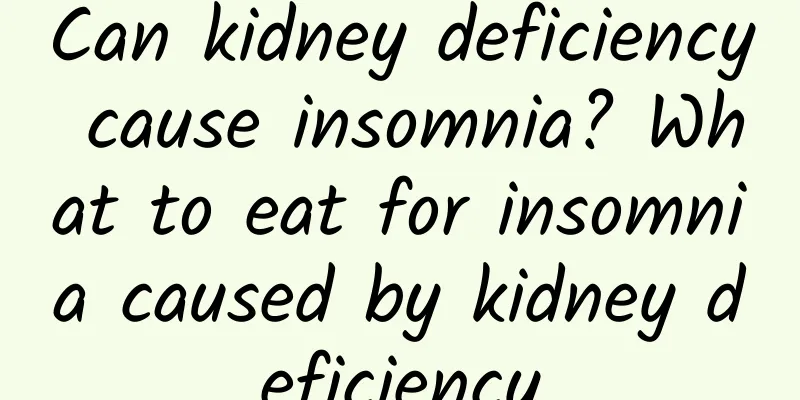What are the symptoms of coughing, phlegm, nasal congestion and sometimes chest tightness and shortness of breath?

|
Many people currently understand that snot is phlegm. In fact, although the two are not the same substance, they have some connections, which still requires medical explanation. In life, some friends not only cough easily, but also have a lot of phlegm and runny nose, and always feel chest tightness and shortness of breath. So the question is, what are the symptoms of coughing, phlegm, nasal congestion, and sometimes chest tightness and shortness of breath? Bronchitis refers to a chronic, nonspecific inflammation of the trachea, bronchial mucosa and surrounding tissues. The main cause of bronchitis is repeated infection by viruses and bacteria, which results in chronic nonspecific inflammation of the bronchi. When the temperature drops, the small blood vessels in the respiratory tract spasm and ischemia, and the defense function decreases, which are conducive to the onset of disease; chronic stimulation such as smoke, dust, and polluted atmosphere can also cause the disease; smoking causes bronchospasm, mucosal mutations, reduced ciliary movement, and increased mucus secretion, which is conducive to infection; allergic factors also have a certain relationship. 1. Acute bronchitis The early stages of acute bronchitis often present with symptoms of upper respiratory tract infection, and patients usually have clinical manifestations such as nasal congestion, clear runny nose, sore throat and hoarseness. The systemic symptoms are relatively mild, but may include low fever, chills, general fatigue, itchy throat, irritating cough and pain behind the sternum. In the early stage, the amount of sputum is not much, but it is not easy to cough up. After 2 to 3 days, the sputum may change from mucous to mucopurulent. Coughing may be aggravated or induced by the patient catching a cold or inhaling cold air or irritating gases. Patients often have a more severe cough in the morning or at night. The cough may also be paroxysmal or sometimes persistent. Severe coughing is often accompanied by nausea, vomiting, and chest and abdominal muscle pain. If accompanied by bronchospasm, there may be wheezing and shortness of breath. Generally speaking, the course of acute bronchitis is self-limited to a certain extent, and systemic symptoms can subside within 4 to 5 days, but the cough can sometimes last for several weeks. Dry rales may sometimes be found during physical examination, which disappear after coughing; moist rales may occasionally be heard at the lung base, and wheezing may be heard when accompanied by bronchospasm. Usually the white blood cell count is normal, and a chest x-ray is unremarkable. 2. Chronic bronchitis Chronic bronchitis refers to a condition in which the patient suffers from chronic cough and sputum production for more than three months each year for two consecutive years, excluding other causes of chronic cough. It is not necessarily accompanied by persistent airflow limitation. (1) Coughing: Recurrent and gradually worsening cough is a prominent manifestation of this disease. In mild cases, the disease only occurs in winter and spring, especially in the early morning before and after getting up, and there is less coughing during the day. In summer and autumn, the cough is relieved or disappears. Severe patients cough in all seasons, which is aggravated in winter and spring. They cough day and night, especially in the morning and evening. (2) The sputum is usually white, mucus and foamy. It is more common in the morning and is often difficult to cough up due to its viscosity. After infection or cold, symptoms rapidly worsen, sputum volume and viscosity increase, or it may become yellow purulent sputum or be accompanied by wheezing. Occasionally, there is blood in the sputum due to severe coughing. (3) Asthma When combined with respiratory tract infection, asthma (wheezing) symptoms may occur due to congestion and edema of the bronchiolar mucosa, sputum obstruction and bronchial lumen stenosis. The patient has a wheezing sound in the throat when breathing and a wheezing sound when auscultating the lungs. (4) Repeated infections: Recurrent respiratory infections are more likely to occur during cold seasons or when the temperature changes suddenly. At this time, the patient's asthma worsens, the amount of sputum increases significantly and becomes purulent, accompanied by general fatigue, chills, fever, etc. There are moist sounds in the lungs and an increase in white blood cell count in the blood. Repeated respiratory tract infections are particularly likely to worsen the condition of elderly patients and must be given full attention. |
<<: Why does fear cause chest tightness?
>>: Why do I feel chest tightness sometimes?
Recommend
Is urticaria contagious? The result is so unexpected
Urticaria is a common skin disease. After sufferi...
Can you get pregnant while having your period together?
We all know that every girl will have menstruatio...
How to remove the lump under the areola
If there is a lump under the areola, you can do a...
Black patches on the skin
The skin is a very delicate organ of the human bo...
Chinese patent medicine for relaxing muscles and activating collaterals
We know that Chinese patent medicines do less har...
What to do if there are red spots at the base of the tongue
There are red spots at the root of the tongue coa...
Can regular running help you lose weight?
Running can slim the whole body, because during t...
What are the causes of tinnitus and deafness?
In real life, tinnitus and deafness are very comm...
What are the dietary treatments for gout? What should I pay attention to?
Diet therapy is very important for diseases like ...
Chinese medicine for liver disease
Liver disease is a disease that occurs due to pro...
What are the treatments and dangers of the sequelae of neonatal encephalitis?
Japanese encephalitis, a sequela of encephalitis,...
What causes nipple pain?
In today's society, many women will experienc...
How to treat inner ear vertigo? This conditioning effect is good
Under normal circumstances, inner ear vertigo is ...
When to take placenta capsules
Placenta capsule is a relatively expensive health...
Will strange sleeping positions affect the fetus?
Sleeping posture is very important for a person&#...









